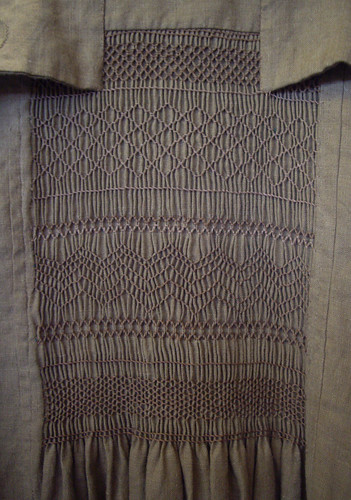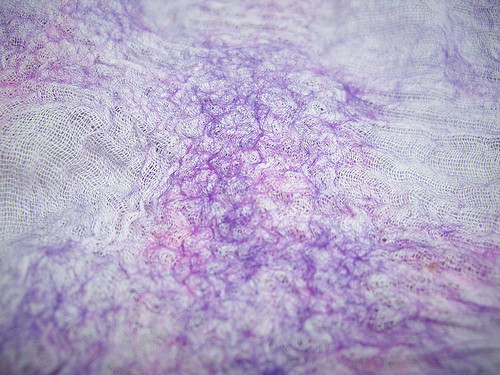
On Sunday afternoon I persuaded Paul to wander round the Museum of English Rural Life.
I hadn’t been since it moved location (in 2005!), and it’s in a much bigger space now. It’s a slightly strange museum – laid out more like a store room than an exhibit, with things shoved up corners and hanging from the ceiling – but it’s an amazing collection, and there’s a wealth of information to go with it.
The highlight of my trip was getting to play dress-up with the reproduction linen smocks. They didn’t have a pair of farmer’s clogs in my size, otherwise I’d have been wearing those as well!
(I used to wear slip-on clogs all the time when I was a student. My friends kindly referred to them as “those sawn-off wellies”. Charming.)
The highlight of the trip was tagging on to the tail end of a guided tour, and being allowed upstairs into the archives – and they have MASSES of textiles! Lace fans, embroidery samplers, tatting, and LOADS of clothing.
I’ve taken a large number of photos of the reproduction smocked coat and tunic, although I was so over-excited that I completely forgot to take pictures of the inside. These garments would have been made entirely by hand, so I’d like to have a look at how the seams were finished.
I can’t help wondering whether there’s been an extensive study made of all the garments hidden away in the archives. With the exceptions of craft books and sampler patterns, I can’t find anything that’s been published on the subject in more than twenty years. (A study was done in 2001, but it’s out of print.)
The next time I go over to the University library, I might have to browse around the clothing and folklore sections, and see what I can find out. This smock collection is crying out “PhD” to me. I wonder…
Like this:
Like Loading...




